| What kind of a nation does not educate its children about the history of a enemy(Jesuits=Zionism) imposing war, it is a nation that has surrender its children to the adversary(Jesuits=Zionism). |
| Who,
What and How it was Predictive
Programed for over 50 years!! |
| Ultimate 911 Predictive
Programming | Jesuit Lightning |
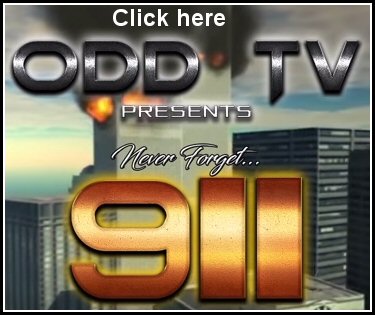 ODD
TV quote: Here we are at the 17 year
anniversary for September 11th, 2001. I would just like
to remind you so that you "Never Forget" that 911 was
executed by the directors(Jesuits) in cahoots with the
Jesuit elites. We will be going over that as well as
more than 60 instances of 911 predictive programming. ODD
TV quote: Here we are at the 17 year
anniversary for September 11th, 2001. I would just like
to remind you so that you "Never Forget" that 911 was
executed by the directors(Jesuits) in cahoots with the
Jesuit elites. We will be going over that as well as
more than 60 instances of 911 predictive programming.
This very real conspiracy was in the works for decades and the mental conditioning is apparent in numerous pieces of media including books, comics, magazines, video games, movies, TV shows, music and album covers. My Quote: To the Viewer of this documentary I challenge you to refute what the evidence proves. Picture is worth a thousand words. 60 instances equal 60,000 words. more than 60 instances of 911 predictive programming. This web page will free your mind on Who, What and How it happen. |
|
Donald Trump January
2000 Quote: “I really am convinced we're in danger of
the sort of terrorist attacks that will make the
bombing of the (1993) Trade Center look like kids
playing with firecrackers...” |
| But there was a certain man, called
Simon, which beforetime in the same city used sorcery,
and bewitched the people of Samaria, giving
out that himself was some great one: To
whom they all gave heed, from the least to the
greatest, saying, This man is the great power of
God. And to him they had regard, because
that of long time he had bewitched them with sorceries.
(Acts 8:9-11) |
WHERE DID THE TOWERS GO?
EVIDENCE OF DIRECTED FREE-ENERGY TECHNOLOGY ON 9/11
Chapter 4; Magic Shows And The Power of Suggestion
by Judy Wood, B.S., M.S., PH.D.
We are never deceived; we deceive ourselves---Johann Wolfgang von Goethe
You didn't hear it. You didn't see it. You won't say nothing to no one ever in your life. You never heard it.
Oh how absurd it all seems without any proof. You never hear it. You didn't see it. You never heard it. Not a
word of it. You won't say nothing to no one. Never tell a soul what you know is the Truth.
---The Who, 1921 - Tommy
A. Unbelievable
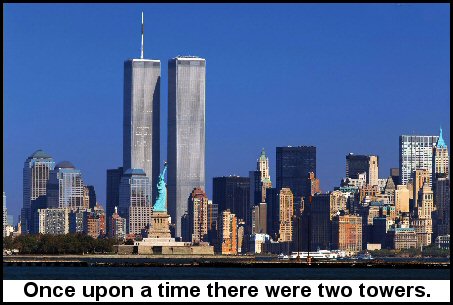
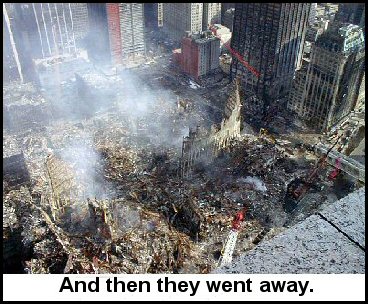
On 9/11 we heard it said
over and over again, "It's unbelievable!" Yes, what we
were shown and what we were told were unbelievable.
So, how is it that the unbelievable becomes believable?
On the morning of 9/11, there were two towers, each over a quarter-mile tall and made of 500,000 tons of material. And then they went away. They were gone in a mere 8 to 10 seconds each.
It has been said, "The American people know what they saw with their own eyes on September 11, 2001." But do they? Most of us were shown images on TV and were told what we saw.
When we go to see a magic show, we're "told"---whether literally or by some process of implication---what we are to see, and so we interpret what we see as unbelievable. But we know we've gone to see a magic show. David Copperfield has performed illusions on TV that appear to cause the Statue of Liberty and freight train to disappear. But we know these are magic shows.
When War of the Worlds aired in 1938, some people missed the opening disclaimer letting them know that the show was fictitious. Those who missed the opening thought it was real Why?
On the morning of 9/11, there were two towers, each over a quarter-mile tall and made of 500,000 tons of material. And then they went away. They were gone in a mere 8 to 10 seconds each.
B. We know What We Saw---Or Do We?
It has been said, "The American people know what they saw with their own eyes on September 11, 2001." But do they? Most of us were shown images on TV and were told what we saw.
When we go to see a magic show, we're "told"---whether literally or by some process of implication---what we are to see, and so we interpret what we see as unbelievable. But we know we've gone to see a magic show. David Copperfield has performed illusions on TV that appear to cause the Statue of Liberty and freight train to disappear. But we know these are magic shows.
When War of the Worlds aired in 1938, some people missed the opening disclaimer letting them know that the show was fictitious. Those who missed the opening thought it was real Why?
|
The War of
the Worlds was an episode of the American
radio drama anthology series Mercury Theatre on the
Air. It was performed as a Halloween episode
of the series on October 30, 1938 and aired over the
Columbia Broadcasting System radio network.
Directed and narrated by Orson Welles, the episode
was an adaptation of H. G. Wells novel The war
of the Worlds.
The first two
thirds of the 60-minute broadcast was presented as a
series of simulated news bulletins, which suggested
to may listeners that an actual Martian invasion was
in progress. Compounding the issue was the
fact that the Mercury Threatre on the Air was a
'sustaining show' (i.e, it ran without
commercial breaks), thus adding to the
dramatic effect. Although there were
sensationalist accounts in the press about a
supposed panic, careful research has shown that
while thousands were frightened, there is no
evidence that people fled their homes or otherwise
took action. The news-bulletin format was
decried as cruelly deceptive by some newspapers and
public figures, leading to an out cry against the
perpetrators of the broadcast, but the episode
launched Welles to fame.
Welles's adaptation was one of the Radio Project's first studies. The War of
the Worlds (1898), by H. G. Wells, is an
early science fiction novel which describes an
invasion of Earth by aliens from Mars. It is
one of the earliest and best-known depictions of an
alien invasion of Earth, and has influenced many
others, as well as spawning several films, radio
dramas, comic book adaptations, and a television
series based on the story. The 1938 radio
broadcast caused public out cry against the episode,
as many listeners believed that an actual Martian
invasion was in progress, a notable example of
mass hysteria.
|
But what has The War of the
Worlds got to do with 9/11?
How many stories have aired without commercial breaks, and what effect does that have on us?
If there had been commercial breaks during War of the Worlds, would there have been such a panic?
If there had been commercial breaks during news coverage on 9/11 would people have questioned it more?
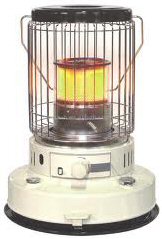

Yet we also know that gasoline burns hotter than kerosene and we know that cars do not collapse from over heated or melted engines.
My teaching schedule
for Fall 2001 began late in the day and included a long
evening class on Tuesdays. Being somewhat of a night
owl, I set my alarm for sometime after 9:00 AM. On
9/11, I happened to wake up before my clock-radio alarm
came on and was working in the next room on my computer
when the clock radio finally did come on. I vaguely
heard the radio in the background and kept on working,
though I wasn't paying much attention to what was being
said. Then I began to notice that whatever story
they were telling seemed to go on an on. It sounded
as though they were telling some sort of sick joke about a
drunk driver who made a wrong turn on the way home from a
party and ran his plane into a building. But then
the same thing seemed to have happened a second time.
It sounded like a joke, except that they never got to the
punch line. Eventually, I began to wonder if what
they were saying might have something to do with
reality. So I went downstairs and turned on the TV.
The same story was
being played on every station I could pick up. There
had indeed been a horrible event. But why were we
getting the same story on every station? Then I
realized also that there were no commercial breaks.
That meant that this must be serious. But whatever
happened to the idea of getting another perspective?
When there's a plane crash, one network might be replaying
the video of it while another is playing an "up close and
personal story," or a "background story" about someone's
loved one who left home that morning to go on a trip, or
about some parts manufacturer of the aircraft, or what
detailed experience some innocent bystander went
through. But here we had every station playing nearly
the same video and in nearly the same way, saying
essentially the same thing, over and over again with out
a commercial break. To me, it did not feel
right. (this is when I called my mother in the Washington,
D.C., area to ask if she saw fighter jets overhead.)
The mere fact that there were no commercial breaks
commanded my attention as if to say, "This is more
important than anything you've ever known." That is,
like War of the Worlds, it was a sustaining
show.
How many stories have aired without commercial breaks, and what effect does that have on us?
I gathered my things
together and headed into campus. It must have been
around 10 AM. When I got to campus and was walking
up to our building, one of my graduate students met me in
the street. That conversation is one I will never
forget. He asked, "Dr. Wood, who is Bin Laden
and what's Al-Qaeda?"
I entered our
building and went up the corner stairs. My
colleagues were talking about what they thought had taken
place. One said, "After the USS Cole, we should have
just taken them all out. These guys need to be
taken out." I asked, "For what?"
My colleague responded, "The towers, they're down,
they're both down." Then we all went to the
faculty conference room to watch the replays on TV.
What I saw was
surreal. These buildings did not just "collapse,"
they unraveled--as I've said before, like sweaters.
Something did not smell right, but here were my colleagues
(full professors who should have recognized the apparent
contradiction of physical principles already being put out
as "the story"), with pitchforks in hand, rallying the
troops to "go get the bad guys." It was like a done
deal, open-and-shut. Meanwhile, there I was, looking at
the TV monitor and thinking there was a kind of War of
the Worlds sick joke being played on us.
If there had been commercial breaks during War of the Worlds, would there have been such a panic?
If there had been commercial breaks during news coverage on 9/11 would people have questioned it more?

On September 11,
2001, we were told that an airplane hit a building and
caused the building to self-destruct an hour later, taking
just 8 to 10 seconds is physically impossible, no matter
what might have initiated the gravity collapse (bombs,
natural causes, and so on). In addition, we were
told that two airplanes, each hitting one of the Twin
Towers, had caused the total destruction of the entire
complex of seven buildings---while not significantly,
fatally, or totally damaging any other buildings!
The explanation we were given was that jet fuel had
ignited office material and that this fire, fed by burning
office material, significantly weakened the steel-frame
buildings. But steel fireplace grills don't collapse
from fire.
Nearly everyone has heard of kerosene
heaters. Do they melt?
The people
"jumping" from the towers was a phenomenon contrary to
anything firefighters had ever before observed. Even
to these New York City firefighters, it was unbelievable.
So, when did this phenomenon become Believable?
Consider confusing
and dangerous events where someone doesn't have time to
evaluate the situation and yet must react. For
example, if a team of police officers with rifles were to
yell, "get down on the ground!" most people would
immediately follow those orders. When someone yells,
"Fire!" in a movie theater, one can expect a stampede to
the exit even without evidence of a fire. Shouting
and confusion will get most people to do what is
asked of them. Most of us will acquiesce so as not
to add to the confusion. People watched the
jumpers. They saw it, so it must be real.

Yet we also know that gasoline burns hotter than kerosene and we know that cars do not collapse from over heated or melted engines.
And wood stoves made of steel do no
self-destruct from fire.

C. What Did We Really See?
So what did we
really see on 9/11/01? It may or may not be what we
were told we saw. What if the first reported
observation was wrong, and then everyone followed
it? The human mind does not operate like a tape
recorder. The human mind puts together the best
story it can based on what it has been presented with, and
it adapts. In a confusing and unbelievable
situation, people tend to look for something that makes
sense.
We look for what
we're accustomed to seeing or expect to see, and we use
this to make what sense we can of the confusion. My
heart goes out to the doctors who, amongst the confusion,
tried to make sense of what they saw and what they were
told (along with the rest of us). In an interview,
two doctors recall that patients quit coming in to the
emergency rooms by noon on 9/11. Dr. Tony Dajer was
asked, "Where are all the people?" He groped for and
explanation. Another doctor latched on to the hope
that most everyone made it out alive. These two
doctors are a a wonderful example of how much people care
for their fellow man. And, like the rest of us, they
desperately wanted---and needed---it all to make sense.
But what happens when it doesn't make
sense?
D. Approach
We must observe the
actual evidence, carefully. But how do we do that
through a preconceived, conditioned, and biased
perspective? One way might be to wipe the slate
clean and begin with a new vocabulary, a new language,
including a visual language. This may require that
we ignore images that we have long been conditioned to
react to in very predictable ways.
In the chapters
that follow, I have purposely given each of the observed
phenomena a new and unique name, using a new vocabulary
that does not come preloaded with familiar connotations
and therefore biased interpretations. Referring to
particulate-filled air as "smoke" causes the biased or
pre-conditioned observer to think of "fire" as the cause
of what is seen. Instead, then, let us use a very
generic term(perhaps even an elementary-level term) that
we would not normally use in this situation, but one that
describes solely and only what we do see, with no other
weighted or pre-supposed meaning. Let's use not the
word "smoke" but the word "fume." A glossary of
terms is provided at the end of this book for convenience.
July 22, 1980 2nd major
Eruption Mt. St. Helens
Below pictures are not in Judy Woods Book.
My wife took these pictures. From a Cessna 150 on July 22, 1980.
Please compare what you see in the picture below of 9/11.




Compare the Towers with the Eruption of Mt. St. Helens
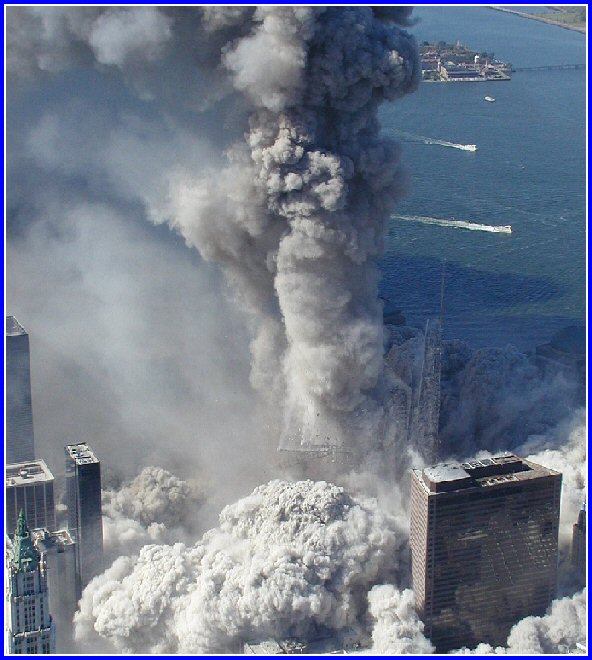
For more information: http://wheredidthetowersgo.com/
Below pictures are not in Judy Woods Book.
My wife took these pictures. From a Cessna 150 on July 22, 1980.
Please compare what you see in the picture below of 9/11.




Compare the Towers with the Eruption of Mt. St. Helens

For more information: http://wheredidthetowersgo.com/
|
|